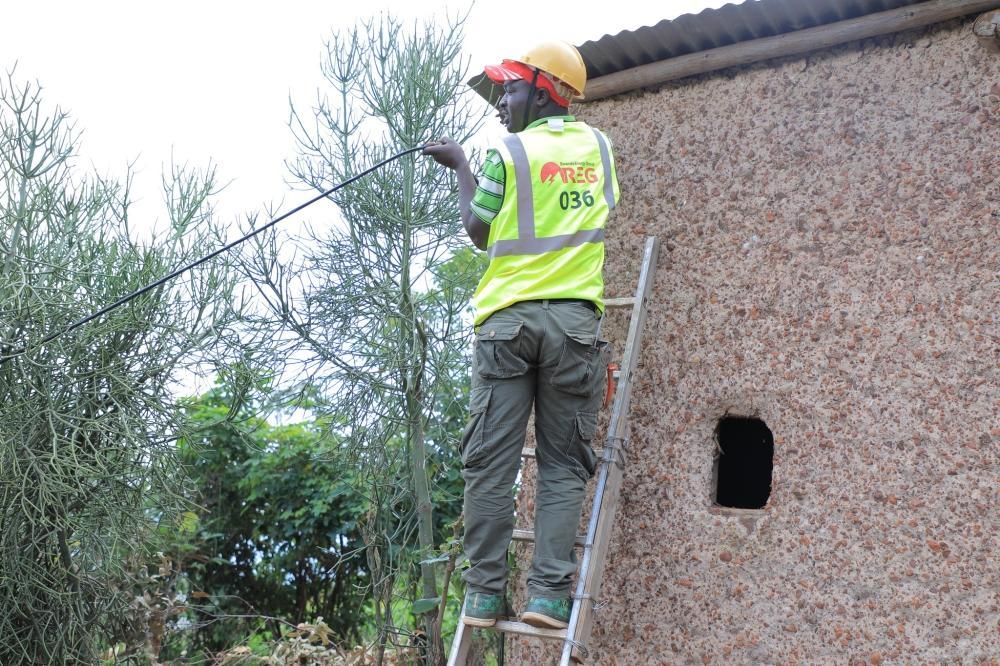Alice Umutesi – Germain Nsanzimana – Emmanuel Nkangura
Africa-Press – Rwanda. Access to electricity in Rwanda has increased from 34 per cent in 2017, to 72 per cent in 2024, according to the new Integrated Household Living Conditions Survey (EICV7).
Urban areas saw an increase from 76 per cent in 2017 to 88 per cent in 2024, while rural areas experienced an increase from 25 per cent to 65 per cent over the same period — a 40-percentage-point increase in rural electrification alone.
By and large, studies have shown that connecting rural communities to electricity has a multifaceted impact, primarily benefiting socio-economic development by boosting income, enhancing education, improving quality of life and health, in addition to promoting economic growth.
‘Felt like stepping into an entirely different world’
Darius Dusingizimana, a 34-year-old resident of Gitoma Village, Musasa Cell, Kinyababa Sector, in Burera District, which borders Uganda, vividly recalls a life without electricity, before people in his rural community first got electricity about 12 years ago.
“I had never seen electricity from birth until around 2013 when some homes in our region got connected,” the father of one said, adding: “We couldn’t listen to the radio or watch TV, relying instead on agatodowa lamps. How can you watch TV with that? Life is completely different now. My home got connected in 2021 and the arrival of electricity has brought a profound change. Now, watching TV and staying informed through the news is effortless.
“Our rural community has been transformed, with saloons and other businesses operating 24/7. It’s difficult to conceive of life without electricity now. Electrical energy allows me to help my child with their homework. Access to social media platforms has opened up the world. I stay informed about everything happening globally through Facebook and YouTube. Having electricity felt like stepping into an entirely different world from the darkness we once lived in.”
Salima Muteteri’s home in Muhazi Sector, Rwamagana District, was connected on an on-grid line. Photo by Emmanuel Nkangura
Two years ago, Salima Muteteri’s home in Muhazi Sector, Rwamagana District, was connected on an on-grid line.
Since then, the mother of four who is tailor has seen an improvement in her livelihood.
She said: “I never had a television at home but now I watch news and other programmes which educate us.”
She bought a smart phone after getting connected. “Charging phones is now easier. Before we got connected it used to cost Rwf100 on batteries and solar power from few neighbours who provided the service. We can now receive or send money to our families and call friends and relatives.”
Annexed to her house is a mini shop that her family built solely for renting. In the near future, Muteteri said she wants to upgrade her tailoring business by buying an electric sewing machine.
The survey also noted gains among the poorest households. Access to electricity by quintile — which categorises the population into five income-based groups from the poorest (Q1) to the richest (Q5) — reveals a 44-percentage-point increase for those in the lowest quintile.
In the first quintile (the poorest), access to electricity rose from 2 per cent in 2014 to 9 per cent in 2017, and then surged to 53 per cent in 2024.
The second quintile increased from 5 per cent in 2014 to 16 per cent in 2017, and 62 per cent in 2024.
In the third quintile, access rose from 7 per cent in 2014 to 25 per cent in 2017, and 68 per cent in 2024. The fourth quintile moved from 17 per cent in 2014 to 37 per cent in 2017, reaching 77 per cent by 2024.
The highest quintile also saw progress, rising from 57 per cent in 2014 to 69 per cent in 2017, and 92 per cent in 2024.
Presenting the findings, Ivan Murenzi, the Director General of National Institute of Statistics of Rwanda (NISR), emphasised that the progress reflects the effectiveness of targeted government programmes aimed at expanding access to basic services.
“Access to electricity has increased more than threefold. That shows the programmes being implemented are well-targeted and are reaching the people who truly need them,” he said.
Murenzi said that one of the most telling indicators of equitable progress is access by income quintile: “If you want to know whether these programmes are reaching the poor, look at the gains in the first quintile.
“A 44-percentage-point increase in electricity access among the poorest is a big deal. The poorest went from just 9 per cent in 2017 to 53 per cent in 2024.”
The EICV survey is conducted every three years but the latest cycle took longer due to delays caused by the Covid-19 pandemic.
Source: The New Times
For More News And Analysis About Rwanda Follow Africa-Press






